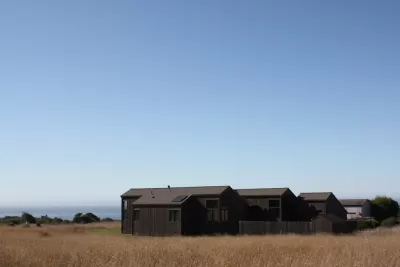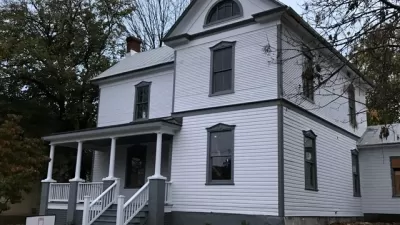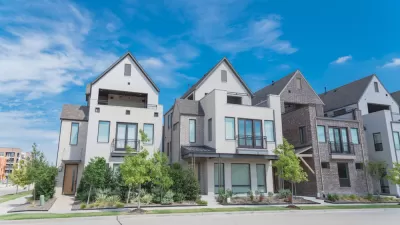The progressive Northern California project is adapting to the times.

Diana Ketcham writes about the past and present of the Sea Ranch, a development on a remote stretch of Northern California coastline that started in 1964. "For an exhilarating historical moment the energies of postwar suburban development, an emerging ecology movement and Modernist architecture found a common purpose: transforming a 5,200 acre sheep ranch here into a progressive residential community, built in a way that was not only in tune with nature, but driven by nature."
In the mid-1960s, the Sea Ranch’s architectural influence was global, notes Ketcham. "And in the following decade, its particular combination of the shed roof, the window seats and ladders, the ingenious overhead spaces for outlooks and skylights as well as sleeping, would be thoroughly absorbed by the mainstream."
More recently, however, a changing world has meant aspects of the Sea Ranch have had to shift as well. Increased density, more year-round residents able to live and work in the community, and environmental concerns, such as the threat of wildfires, mean architects and planners are adapting to the area’s needs.
Ketcham traveled to the Sea Ranch and describes in more detail the features of a number of new projects as well as the construction challenges, including the use of fire-resistant building materials, removal of hazardous trees, and design updates that retain the character and architectural spirit of the original buildings.
FULL STORY: Sea Ranch, California’s Modernist Utopia, Gets an Update

Study: Maui’s Plan to Convert Vacation Rentals to Long-Term Housing Could Cause Nearly $1 Billion Economic Loss
The plan would reduce visitor accommodation by 25,% resulting in 1,900 jobs lost.

North Texas Transit Leaders Tout Benefits of TOD for Growing Region
At a summit focused on transit-oriented development, policymakers discussed how North Texas’ expanded light rail system can serve as a tool for economic growth.

Why Should We Subsidize Public Transportation?
Many public transit agencies face financial stress due to rising costs, declining fare revenue, and declining subsidies. Transit advocates must provide a strong business case for increasing public transit funding.

How to Make US Trains Faster
Changes to boarding platforms and a switch to electric trains could improve U.S. passenger rail service without the added cost of high-speed rail.

Columbia’s Revitalized ‘Loop’ Is a Hub for Local Entrepreneurs
A focus on small businesses is helping a commercial corridor in Columbia, Missouri thrive.

Invasive Insect Threatens Minnesota’s Ash Forests
The Emerald Ash Borer is a rapidly spreading invasive pest threatening Minnesota’s ash trees, and homeowners are encouraged to plant diverse replacement species, avoid moving ash firewood, and monitor for signs of infestation.
Urban Design for Planners 1: Software Tools
This six-course series explores essential urban design concepts using open source software and equips planners with the tools they need to participate fully in the urban design process.
Planning for Universal Design
Learn the tools for implementing Universal Design in planning regulations.
City of Santa Clarita
Ascent Environmental
Institute for Housing and Urban Development Studies (IHS)
City of Grandview
Harvard GSD Executive Education
Toledo-Lucas County Plan Commissions
Salt Lake City
NYU Wagner Graduate School of Public Service





























